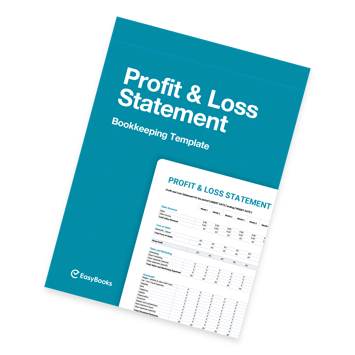A profit and loss (P&L) account is essential for your business to keep track of its profitability. Good bookkeeping practices use them to look at profits and losses for each quarter. If you’re thinking about implementing them for your business but don’t know where to begin, read on to see a profit and loss account explained.
- Profit and Loss Account Explained
- Why Should I Use a Profit and Loss Account?
- Profit and Loss Account Terminology
- What Isn’t Included in a Profit and Loss Account?
Profit and Loss Account Explained
Essentially, a P&L account is a story. It’s the story of your business’ finances and trading during a specific time period. This could be a month, a year or even five years. It’s a piece of bookkeeping terminology you’ll apply to the figures that show whether you’ve made a profit or a loss.
Included in a profit and loss account will be an accurate look at your income from sales, expenses, bank interest and other sources.
Expenses could be ones directly linked to your sales, such as the cost of goods. Or, they could be other administrative articles such as overheads from office supplies or transportation.
The key thing a P&L account shows is whether your business has produced more income than it has spent on its running costs. It can also be used to calculate both income and corporation tax.
By using a P&L account, you can calculate and visualise your business’ net profit for the year. It’s not a look into your current bank statement, which may include payments that are from a previous quarter. It’s only intended to look into a specific period of invoiced sales and expenditures.
Why Should I Use a Profit and Loss Account?
A profit and loss account helps you to see whether your business is making money. Simple? Yes. Essential? Most definitely. Whether you do your own bookkeeping or outsource it to a third-party, a profit and loss account is crucial.
You can also see the workings of your business and deduce if there are any needs for adjustment.
For example, let’s say your company sells hiking gear. By comparing multiple profit and loss accounts created in each quarter over a year, you could see how much money you spend on advertising for each type of product.
Clearly you won’t sell much winter hiking gear in the summer months. You can look into your advertising budget and adjust those numbers seasonally to represent the changing needs of your customers.
A P&L account helps you calculate your income and corporation tax. You can calculate net profits before and after whichever charges apply to your organisation.
Another benefit of a profit and loss account applies only to limited companies. When paying dividends of a profit to shareholders, a business can only pay up to the limit of profits made after corporation tax, plus any other net earnings from previous years. The profit and loss accounts help you check whether sufficient profit is available when paying dividends, but don’t forget you need cash to pay those dividends.
Finally, a P&L account doesn’t have to be complicated - creating one can be simple.
Profit and Loss Account Terminology
P&L accounts can include several different terminologies which can be confusing for some:
- Gross Profit: Total income/sales minus the cost of goods.
- Net Profit: This is your actual income - it’s the final amount after deduction after expenses/operating costs.
- Net Income: This is your income minus the cost of goods, expenses and taxes. This should be your final figure.
- Operating Profit: This is the profit after you deduct operating expenses (such as overheads) from gross profit. It doesn’t include tax or interest.
What Isn’t Included in a Profit and Loss Account?
The overall profitability of a business is seen in a P&L account.However, it doesn’t show anything that your business owns or may owe. For example, it cannot state whether you’re running out of the capital as you spend money on inventory. For something like this, you’d need a balance sheet which describes your assets and liabilities.
The reason why a P&L account doesn’t include the cash in your bank is because money isn’t profit. Banked money is affected by non-profit and loss actions, such as the purchasing of capital assets like cars, homes or simple things like office chairs. These would go on your balance sheet.
Building your profit and loss account can seem complicated at first, but it doesn’t have to be. There are a number of useful downloadable templates out there you can utilise to make your business run that little bit smoother.
Implement a Profit and Loss Account For Your Business
Evaluating profitability is a crucial task for any business. If you’d like to implement a P&L account for your company, look no further. With our helpful downloadable templates, you can see how your business is doing.
The templates include resources on profit and loss, customer invoices, tracking expenses and more. Click the link below for your very own template pack.







